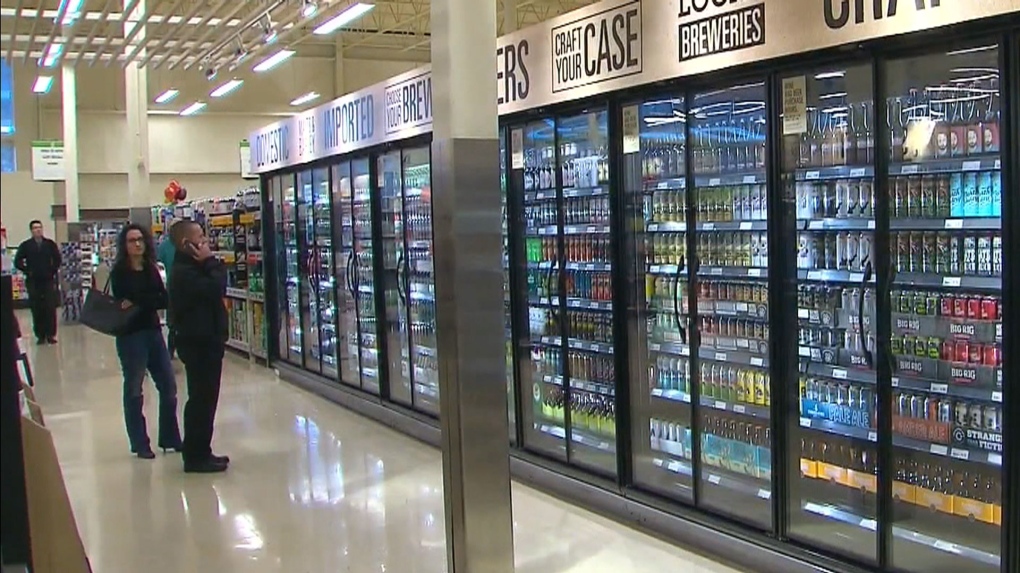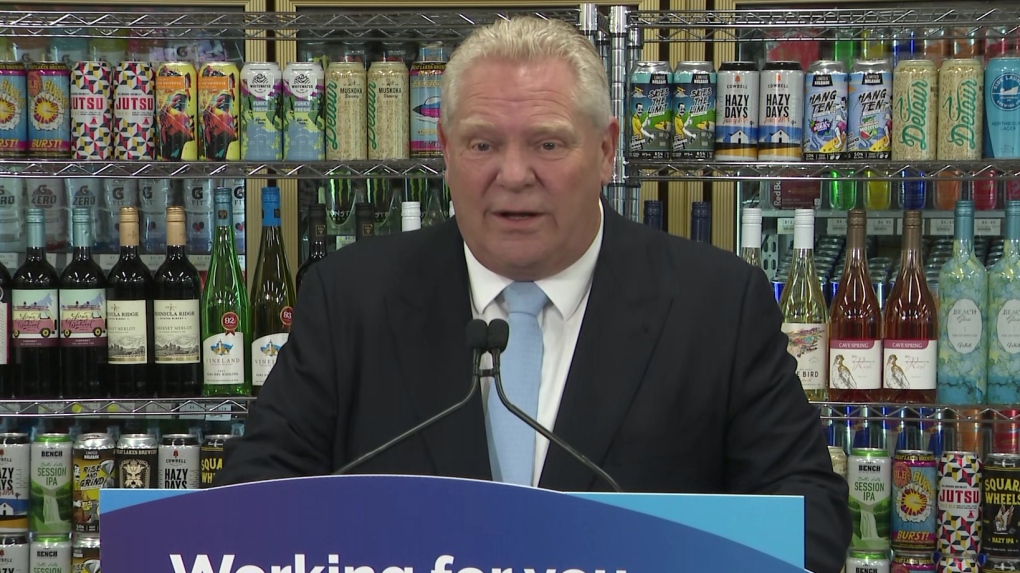Canada's biggest pension fund earned an eight per cent return last year, but significantly underperformed the 19.9 per cent return of its reference portfolio.
The lower return for the Canada Pension Plan Investment Board in its fiscal year ending March 31 can be explained in part by higher volatility in the stock-focused benchmark portfolio compared with the diversified, long-term return focus for the pension fund, chief executive John Graham said on Wednesday.
The reference portfolio, made of 85 per cent global equity and 15 per cent Canadian bonds, benefited last year from stock price surges in the seven largest U.S. tech stocks (known as the Magnificent Seven), while the pension fund has a much broader portfolio that is also invested in infrastructure, real estate, private equities and credit.
"Against a very simple, naive construct like the reference portfolio that has become very concentrated with Magnificent Seven, I think we would expect to have wild swings in performance right now," Graham said in an interview.
He added that CPPIB's returns looked "really good" against a more diversified benchmark, which would be more the norm in the pension industry where stable, long-term performance is the goal.
The pension fund's returns over the past 10 years have also fallen short of the reference portfolio, but only by 0.3 per cent.
Looking ahead, a diversified portfolio could be even more important, as Graham said he sees returns reverting back to long-term trends, down from the higher returns of the past twenty years that were boosted by trends like falling interest rates and booming Chinese growth.
"It's going to be harder to generate returns over the next 10 years than it has been over the past 20," he said.
"Inflation is stickier than expected, stickier in the Americas for sure, and geopolitics is kind of front and centre and certainly having an impact on how the world is rewiring itself."
Shifting trends in recent years has led CPPIB to pull away from emerging markets toward developed markets where the opportunities are better, Graham said.
The shift hasn't, however, resulted in a higher proportion of investments going to Canada, something the federal government is trying to encourage.
CPPIB's portfolio had 12 per cent in Canada as of the end of March, down from around 16 per cent in 2019, and 31 per cent in 2014.
Graham said the portfolio is still heavily overweighted on Canada given its roughly three per cent of global GDP, and there is a lot the country has going for it including interesting opportunities in the energy sector.
But he said it's also important to have growth, and to figure out how to create large investment opportunities, and a conducive investing backdrop in areas like regulations and permitting.
"At the end of the day, the markets will go off of growth."
Some of the biggest global transactions the fund made last year included boosting its holdings in U.S.-based renewables developer Pattern Energy Group by US$905 million; an agreement to invest up to US$2.9 billion in NetCo, Italy's largest fixed telecoms network; and the sale of its stake in the Hohe See and Albatros wind farms off the shores of Germany for $374 million in proceeds.
The investment in Pattern fits within CPPIB's plans to double its green and transition assets by 2030 as it works toward a 2050 net-zero target. The fund has however resisted calls to set interim emission reduction targets, as many other pensions already have.
The fund remains focused on economywide reductions and helping companies transition, said Graham, rather than short-term targets.
"Really focusing on investing in companies, and investing in their decarbonization plans, and not focused on short-term, because in the short term, we could even see the carbon in our portfolio increase."
Elsewhere, CPPIB reduced its exposure to real estate by one percentage point to eight per cent as it made several office real estate sales in a struggling market.
The real estate portfolio lost five per cent last year as higher interest rates and work-from-home trends affected office valuations.
"Office, you know, had a challenging year, and we took some lumps on it, but made tough decisions and I think we're in a great position going forward."
CPPIB's net assets totalled $632.3 billion on March 31, up from $570.0 billion a year earlier.
The increase in net assets included $46.4 billion in net income and $15.9 billion in net transfers from the Canada Pension Plan.
This report by The Canadian Press was first published May 22, 2024.
Canada Pension Plan Investment Board’s exposure to investments in yuan has fallen by half in just two years, as the money manager pulls back in the world’s second-largest economy because of higher risks.
Canada’s biggest pension fund held five per cent of its assets in Chinese currency as of March 31, according to its annual report released Wednesday, down from 10 per cent in 2022.
“Our strategy’s the same in China,” Chief Executive Officer John Graham said in an interview. “But with respect to investing, we’re always asking — how much and how do we get it? And certainly over the past few years, our appetite is probably less than it was historically, and that’s reflected in the size of the portfolio.”
The fund returned eight per cent in the fiscal year that ended in March, aided by a nearly 14 per cent gain on its public stock portfolio. But Chinese equities were a drag on results, as China’s stock market “diverged from other major markets due to challenges in the real estate sector,” the annual report said.

Some of Canada’s largest institutional investors are adjusting their strategies in China, concerned about rising economic and policy risks and its deteriorating relationship with the U.S. and other countries. Last year, a senior executive at British Columbia Investment Management Corp. told lawmakers that the fund was pausing direct investments in China, following a similar move from Ontario Teachers’ Pension Plan.
For CPPIB, Asia Pacific investments returned just 0.1 per cent during fiscal year, partly due to foreign currency losses. The region represents 21 per cent of the portfolio — down from 26 per cent two years ago.
The fund eliminated about a dozen positions in its Greater China public equities team recently, representing close to 10 per cent of its Hong Kong staff, Bloomberg News reported in March.
CPPIB, with assets of $632 billion, has been active in dealmaking so far in 2024, and Graham said the drop in global deals is likely over. Central bank policy interest rates have stabilized and credit spreads have tightened in recent months.
“Over the past couple years, transaction activity has been a little bit below normal as the market tries to find a bid-ask spread,” Graham said.
“I think you’d expect to see us be more active over the next 12 months on both the buying and the selling side for most of the asset classes in the portfolio.”
Earlier this month, CPPIB agreed to buy utility owner Allete Inc. for about US$3.9 billion in partnership with Global Infrastructure Partners. It also sold shares in the initial public offering of cruise operator Viking Holdings and is among the investors in health-care software company Waystar Holding Corp., which is seeking to raise as much as US$1 billion in a U.S. IPO, Bloomberg reported on May 14.
Canadian pension fund giant CPP Investments reported its annual results on Wednesday, earning an 8 per cent return in the fiscal year that ended in March. The fund credited strong equity market performance and gains in its private equity portfolio for boosting returns, while emerging markets and real estate assets turned in a weaker performance.
The fund, which invests retirement funds on behalf of more than 20 million Canadian workers and retirees, now has more than $630 billion worth of assets in its portfolio. That makes the fund not only one of the biggest pension funds in the world, but also one of the best performing ones, with a 10-year annualized return of 9.2 per cent.
John Graham, CEO of the Canada Pension Plan Investment Board, told BNN Bloomberg on Wednesday that the portfolio “performed as designed” and added that diversification across various asset classes and geographies was key to the fund’s performance.
Investing for the long-term
CPP’s portfolio needs to grow to meet the payout obligations of plan members for decades to come, which Graham says is why his team has to keep a long-term focus.
"In a portfolio like ours you can’t swing around in the markets. You can’t make tactical views,” he said.
He added his team has built a "supertanker that will move through rough waters and a range of macroeconomic conditions."
The importance of diversification
In order to accomplish optimal results, the fund "has exposure to geographies all over the world."
And with the S&P 500 up over 88 per cent in the past five years, Graham says the fund has benefited from the performance of U.S. markets, particularly in the last year.
Despite the temptation to double down on a winner in, as Graham put it, "an age of U.S. exceptionalism from a return perspective," he says diversification in other geographies remains a top priority for the fund’s managers.
Cutting real estate exposure
Canada’s biggest pension funds have been major owners of real estate, but a sluggish commercial real estate market has taken a toll on pension funds’ returns.
CPP Investments recorded a 5 per cent loss on its real estate holdings last year, a drop it blamed on high interest rates and work-from-home trends that held back commercial real estate valuations across the board.
The fund recently sold its interests in a pair of Vancouver towers and a business park in southern California following underperformance within the sector.
"We probably have less (real estate exposure) than many peers around the globe," Graham said. "Real estate is a very heterogeneous asset class."
Graham added the ongoing Artificial Intelligence boom has boosted valuations of assets such as data centres, which CPP owns a number of. "Residential real estate in the Americas is also performing well but that is all offset by challenges in the office space [and] retail has been challenged for a while."
Currently, CPP has about 8 per cent of its funds invested in real estate but despite the recent underperformance, Graham added the fund will continue to invest in the sector as opportunities present themselves.
Cautiously optimistic on equities
CPP has a significant exposure to equities both in the public and private markets, which has led the fund to rank among world’s best in terms of long-term performance.
"We have certainly benefited over the last 10 years or even longer from a pretty constructive backdrop for equities markets\," Graham said.
But today’s markets are not the same as they were just few years ago. Graham recognizes that low rates and low inflation might not be tailwinds for the markets going forward.
"With rates being higher, inflation being sticker and geopolitics coming front and centre … it’s important to be in the equities market but we will experience some reversion to the mean to the long-term expected returns."
Investing more at home
Earlier this year, over 90 top business leaders put their names to an open letter asking pension funds to invest more in Canada. The request has generated a lot of reaction from those in favour of the plan and opposed it, and has even prompted the federal government to tap former Bank of Canada Governor Stephen Poloz to examine the issue.
Graham says the ongoing debate is a healthy one, and one the CPP is happy to engage in.
"Right now this dialogue is going in the right direction… I am thinking about how we make Canada more investible, not only for domestic capital but to international capital. That’s ultimately the goal," he said.
Graham added the Canada remains an important market for the fund as it continues to look for opportunities at home.





